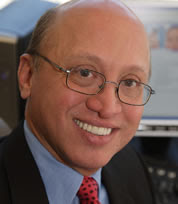
For migraine sufferers, the recent FDA approval of Botox as a migraine treatment gives them access to the only thing that might actually work—injections of Botox.
Migraine victims have long awaited a drug that would avoid migraines, not just treat them after they start. Studies prove Botox’s ability to block nerves that cause a migraine. In one study, chronic migraine sufferers getting Botox injections had 9 fewer days of headaches per month compared with those receiving a placebo, who reported 6.7 fewer.
In another study that was funded by Allergan, Botox users reported 7.8 fewer days per month of any headaches (including migraines) compared with 6.4 days’ fewer headaches reported by those receiving the placebo injections.
Guilty Plea
Allergan had previously been ordered by the Justice Department to pay $375 million in fines for unauthorized promotion of Botox for headaches and cerebral palsy from 2000 to 2005. The fine was lowered to $350 million upon Allergan’s willingness to plead guilty to the charges. Allergan was also ordered to forfeit $25 million in assets and to stick to a 5-year mandated plan to disclose any payments to doctors and annually certify that their various divisions meet federal health care requirements.
Who can use it?
Men and women who have a migraine headache at least 15 days a month with pain lasting at least four hours qualify for treatment. It is assumed that health insurance carriers will approve this as a covered expense, since no other treatment has provided similar results. Treatment includes multiple injections around the neck and head every 3 months.
Allergan spokesperson, Caroline Van Hove, believes that insurers are unlikely to fight coverage of the drug since “this is a population that hasn’t responded to any of the conventional treatments.” Botox was cleared for migraine treatment earlier this summer in the UK and the company anticipates approvals in the rest of Europe and Canada yet this year.
Stock Market Reaction
Allergan (AGN) is running around $72 per share this month (Oct 2010). A month ago it was averaging $66 per share. The company, which generated $1.3 billion in 2009 sales, may earn $1 billion more in annual revenue with the migraine approval, said Aaron Gal, a Sanford C. Bernstein & Co. analyst in New York, in a May 2010 report.








